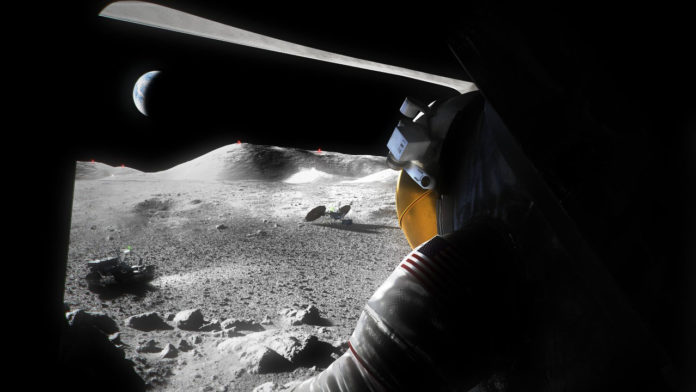As NASA makes strides to return humans to the lunar surface under Artemis program, the agency announced plans to create additional opportunities for commercial companies to develop an astronaut Moon lander. NASA is calling on American companies to propose concepts for landers that can carry astronauts between lunar orbit and the lunar surface for missions beyond Artemis III.
The new lander, built and operated according to NASA‘s long-term requirements at the Moon, will have the capability to dock to a lunar orbiting space station known as Gateway, increase crew capacity, and transport more science and technology to the surface.
As part of future Artemis missions, NASA’s plans call for long-term lunar exploration and include landing the first woman and first person of color on the Moon. Last year, NASA picked SpaceX to build the first crewed lunar lander for the agency’s Artemis program, which is working to put astronauts on the Moon in the mid-2020s. NASA now is asking SpaceX to transform the company’s proposed human landing system into a spacecraft that meets the agency’s requirements for recurring services for a second demonstration mission.
To bring a second entrant to market for the development of a lunar lander in parallel with SpaceX, NASA will issue a draft solicitation in the coming weeks. This upcoming activity will lay out requirements for future development and demonstration lunar landing capability to take astronauts between orbit and the surface of the Moon. This effort is meant to maximize NASA’s support for competition and provides redundancy in services to help ensure NASA’s ability to transport astronauts to the lunar surface.
“This strategy expedites progress toward a long-term, sustaining lander capability as early as the 2026 or 2027 timeframe,” said Lisa Watson-Morgan, program manager for the Human Landing System Program at NASA’s Marshall Space Flight Center in Huntsville, Alabama. “We expect to have two companies safely carry astronauts in their landers to the surface of the Moon under NASA’s guidance before we ask for services, which could result in multiple experienced providers in the market.”
